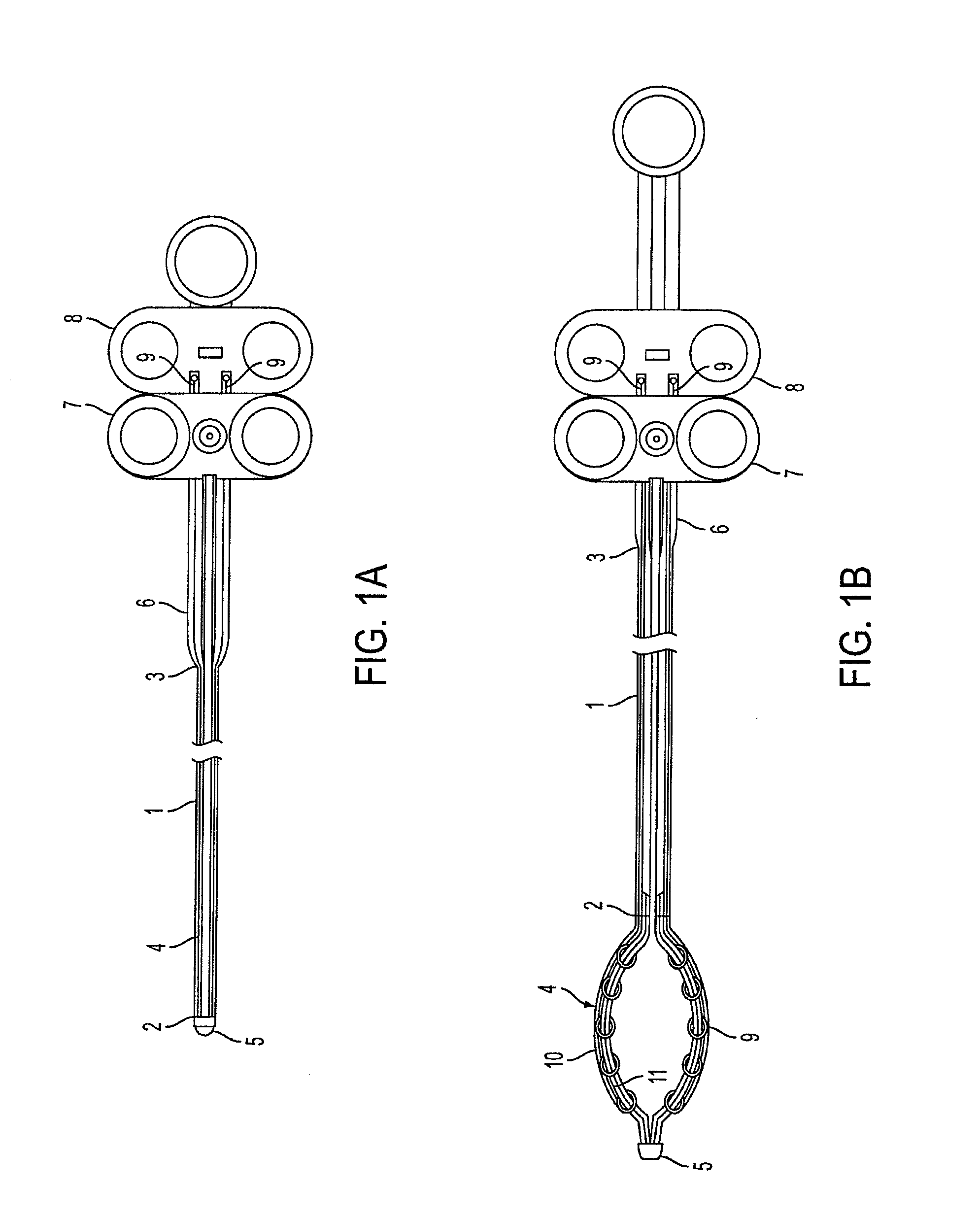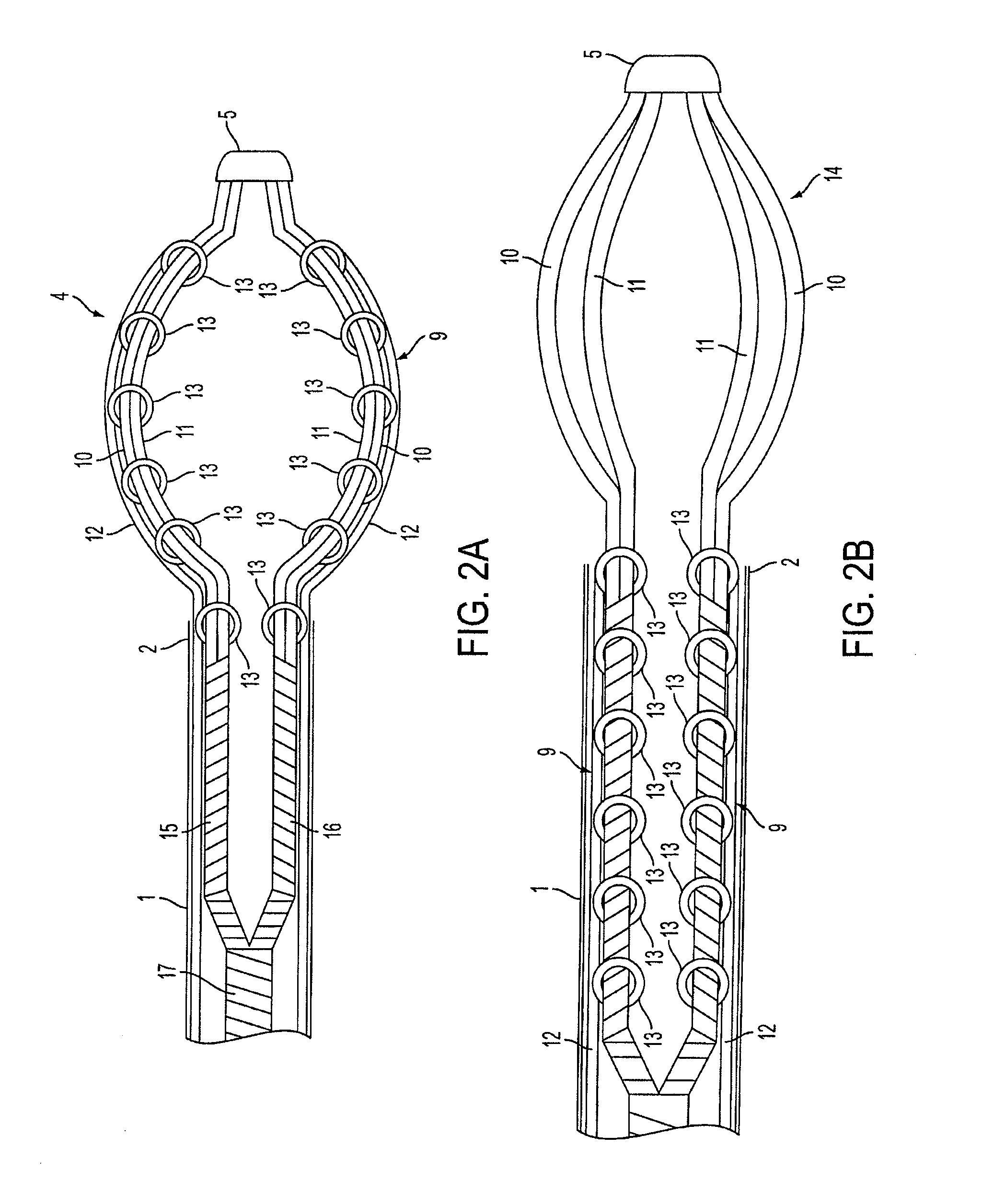Two-stage snare-basket medical device
a medical device and two-stage technology, applied in the field of medical devices, can solve the problems of high cancer risk, high risk of cancer, and significant loss of small polyps, and achieve the effect of reducing the chance of specimen loss, not increasing the cost of the procedure, and facilitating the acquisition and retrieval of specimens
- Summary
- Abstract
- Description
- Claims
- Application Information
AI Technical Summary
Benefits of technology
Problems solved by technology
Method used
Image
Examples
Embodiment Construction
[0049]In a preferred embodiment, the present invention, referred to herein as the “Two-Stage Snare-Basket,” is a medical device that can be passed through a colonoscope, upper gastrointestinal endoscope, duodenoscope or an enteroscope and operated during a colonoscopy, upper gastrointestinal endoscopy (esophagogastroduodenoscopy), ERCP (endoscopic retrograde cholangio-pancreatography) or enteroscopy procedure, respectively. The Two-Stage Snare-Basket comprises a handle on one end of an elongated tubular element that is connected to and controls a first snare configuration on the other end in the first stage of operation that can be converted into a second basket configuration in the second stage of operation. Initially, the first snare configuration is in a closed position, as shown in FIG. 1A. It can be converted to the open or first snare position, as shown in FIG. 1B, by for example, pushing on a handle (such as (7), (8) of FIG. 1A and FIG. 1B, described in more detail below). St...
PUM
 Login to View More
Login to View More Abstract
Description
Claims
Application Information
 Login to View More
Login to View More - R&D
- Intellectual Property
- Life Sciences
- Materials
- Tech Scout
- Unparalleled Data Quality
- Higher Quality Content
- 60% Fewer Hallucinations
Browse by: Latest US Patents, China's latest patents, Technical Efficacy Thesaurus, Application Domain, Technology Topic, Popular Technical Reports.
© 2025 PatSnap. All rights reserved.Legal|Privacy policy|Modern Slavery Act Transparency Statement|Sitemap|About US| Contact US: help@patsnap.com



